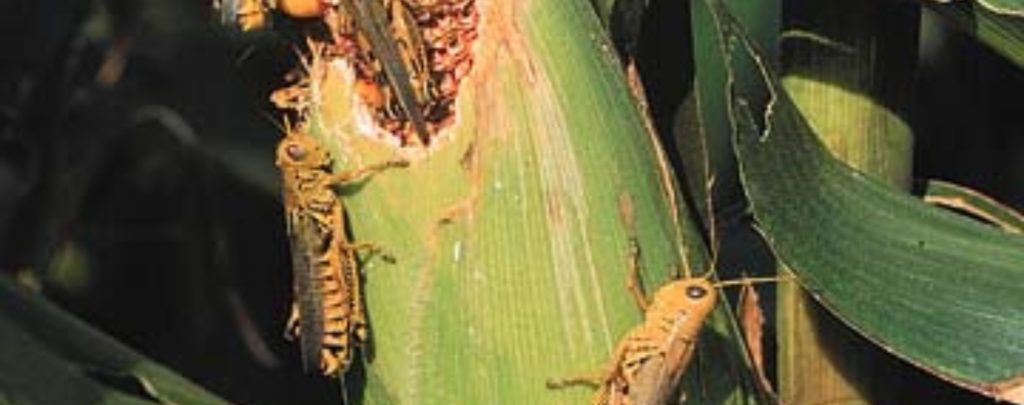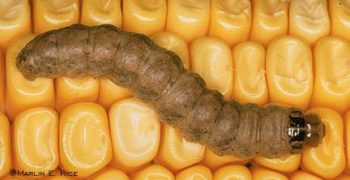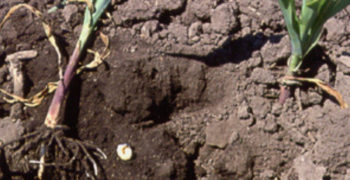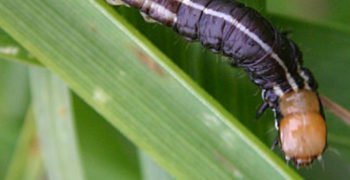Description:
Grasshoppers are your typical feeders on weeds, grass and cultivated crops. The populations of grasshoppers can be different every year. Typically, the populations are greater if it has been a warm and dry season. If there has been a drought, it reduces the grasshoppers natural vexation, which then forces them to relocate to cultivated crops. They are somewhat long, have a brownish green tint to them. Their head is prominent with large eyes. Grasshoppers that you may see in corn fields can be up to nearly two inches long.
Time of attack:
Anywhere from early June until harvest.
Damage:
You will see the greatest damage along the edges of the field by the ditches. Be encouraged to check the whole field if damage is significant. You will be able to tell the grasshoppers from the irregular holes being chewed on the leaves. Usually they work from the outside in. In some cases, they might even have the leaves completely defoliate.
Scouting:
Scouting along the field edges is the best place to start. Stray away from the edges at least 24 rows to evaluate how bad the damage really is. In 5 different areas estimate the damage every square yard.
Economic Threshold:
8 or more adults or 15 or more nymphs per square yard near the field border, or 3 or more grasshoppers per square yard throughout the corn field



